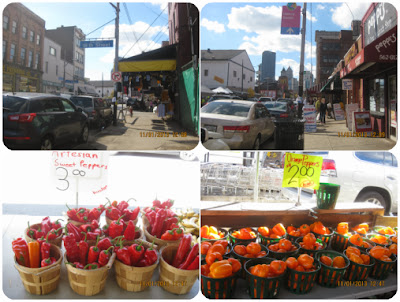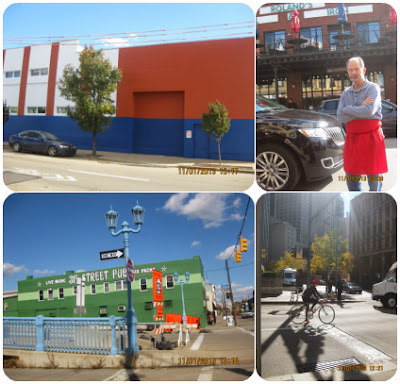Let me tell you a story. Just a story, no Yinzerita or beer winning trivia or Investigation Discovery. So just sit back and hear me out.
One the first day of November, I needed to get out of the office in Lawrenceville and head to a graphic design shop in Cultural District to do a final approval on a printing project, just to make sure nothing would go wrong.
It was a lovely sunny day, so I planned amble time for this trip and decided to walk to the shop and walk back to catch a team meeting in the office. It was a 40-minute walk one way and most of the time you find yourself walking through the Strip District. This was actually the first time, I took a walk through this famous neighborhood and had some time to take in what I saw, heard, and smelled. It’s a vibrant market. You see those organic food stands everywhere, old but tasteful and sometime colorful buildings aligning along the streets, professionals working in adjacent areas, like downtown, having their lunches in those delicious restaurants or outdoor food stands, and some visitors from outside of Pittsburgh wandering around and about doing some antique shopping in those family-owned shops. Oh, Frank Sinatra’s music would occasionally escape from some CD stores and flew around the background to bring you back to the old times.
It was a great walk. Yet, that’s not the entire story I want to tell.
One the way back from the Cultural District, I was attempted by the great smell of food in the air. So I decided to spend $5 for a lunch to see if I can get one that is not fast food. As I was thinking that, I passed by a food truck where two people were serving food outside and one lady was working inside of the truck. The gentleman had a big smile and was greeting every of his customers with sincerity and humor. He also had many loyal customers who seemed come to his place quite often, because he would say something like this “I haven’t seen you this summer, where have you been?”
Well, nevertheless, as a daughter of a former restaurant owner, I understand that a happy person often make very good food. So those fried rice and noodles and spring rolls looked so delicious as if they were saying “try me, and you will not regret!” So I spent $5 dollars getting a box of mixed fried noodles and rice plus a spring roll. Not bad. Not bad at all. Maybe I was influenced by the good spirits of this sands and content about the good lunch deal, before I left, I was attempted again to talk to the gentleman.
And I did. From our brief conversation, I learned that he is of Philippine origin, came to Pittsburgh in the 1960s, opened an Asian grocery store and ran it until 1988. Made some money, but the market was changing at that time in Pittsburgh (population outflow) and he wanted to try something new. So he closed the grocery store in 1988 and opened this food truck in 1989. He was happy about the business so the food truck has been around ever since. Since he owns the block the food truck resides on, he has been at the same spot for 24 years. And his name is Robert.
It’s a beautiful story about the resilience of the people living in our City, an inspiring story about the adaptability of International folks thriving in this City while also contributing to its prosperity, and…... there is more…..
As I kept walking while ruminating over Robert’s story in Pittsburgh, a brand new woody stand inside a typical Strip District building caught my attention. Two gentlemen were conversing lightheartedly but I could tell the one in Pittsburgh Penguins hockey shirt was very excited about something new in his life, although he appeared to be calm and in charge. So I couldn’t help but stopping to ask the question “Sir, Are you planning to open a new business here?” He might be slightly surprised by this question from a complete stranger, but he was kind enough to nod his head and said “Yes. I am”. Then I told him the story of Robert just down the street and wished him good luck.
Isn’t this a great manifestation of life, and our life in and around Pittsburgh? Some people have been around the block for a long time and they can tell you all about history and their experience so we become humble and eager to create our own legacy. There is also always someone new trying to find their spots, and they can tell you the excitement, the exploration, and the possibilities we face ahead so that we always have something vibrant to hope for, for ourselves, our family, our neighborhoods, as well as our city.
I can’t never get enough of what I encountered that day in the Strict District. Not after opening to its lively spirits and finding myself completely submitting to its dynamics and beauty, let alone knowing all these stories behind those brick walls and glass windows.
Can you?











